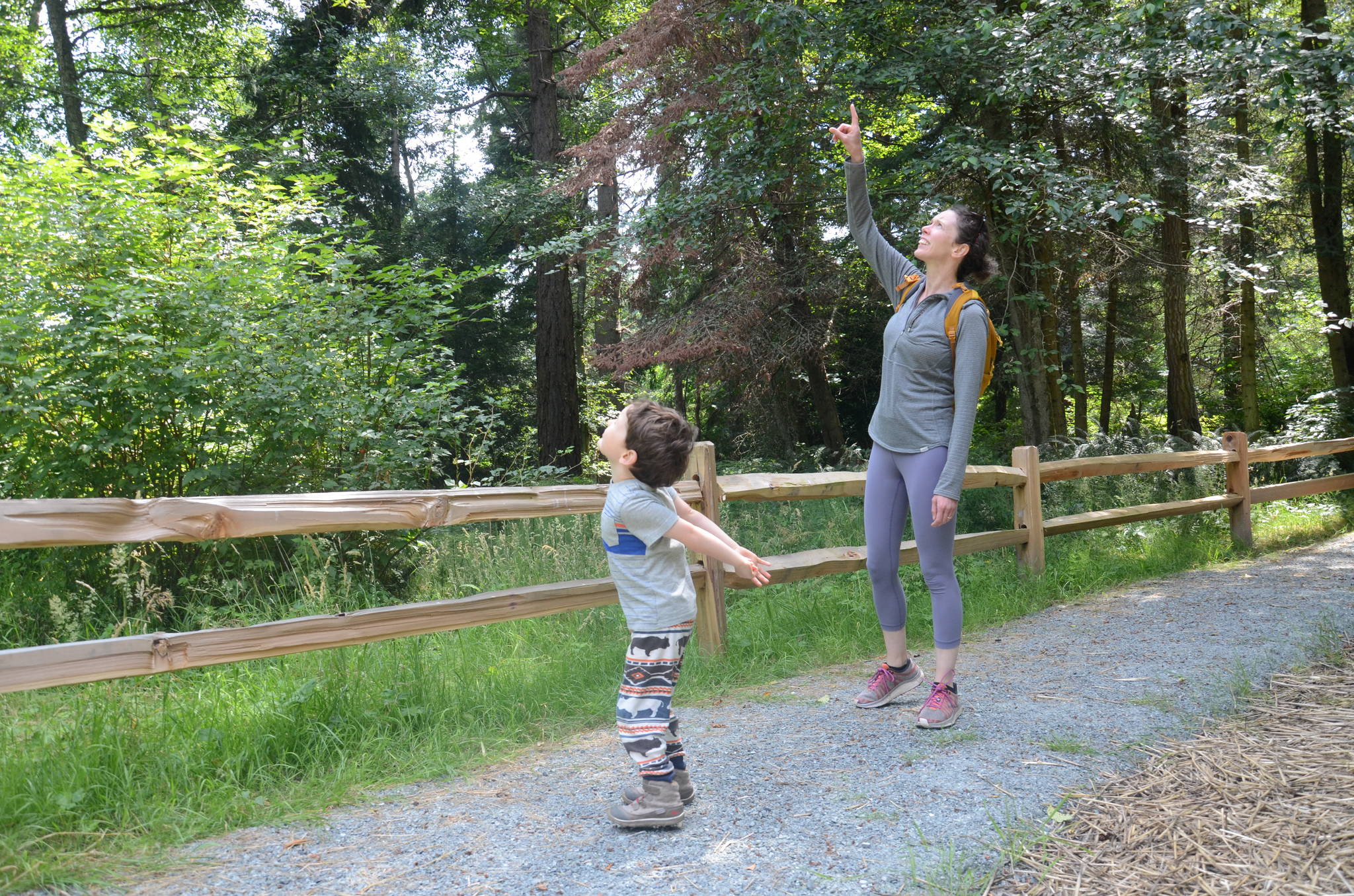One of Halston Hunter’s favorite things to do at Possession Sound Preserve is to pick salmonberries and thimbleberries. The 4-year-old from Clinton was on the trail with his mother, Brook Ott, hoping to do just that when another one of his favorite things happened.
“Look! There’s a bald eagle!” Ott said, pointing to the raptor overhead.
Possession Sound Preserve has a way of wowing people like that.
The wild and rugged site is the Whidbey Camano Land Trust’s newest nature preserve, which opened this summer.
With a half-mile of natural shoreline, upland forest and feeder bluffs, the 45-acre property south of Clinton is a refuge for fish and wildlife.
It’s also an inspiring escape for people.
A winding trail drops down through the forest to the dramatic beach below.
“It just feels so removed and pristine,” said Ott. “We love it.”
The Land Trust has long considered the property a conservation priority because of its vital role in the ecology of the Salish Sea.
Eelgrass beds line the preserve’s more than half-mile of shoreline offering excellent habitat for Pacific herring, sand lance and smelt.
These forage fish are critical food sources for salmon that pass by on their migration to the Skagit, Stillaguamish and Snohomish Rivers.
In a partnership with Island County, the Land Trust secured nearly $2.1 million from four funding grants to permanently protect the property in 2019.
Extensive site restoration and construction of a small parking area prepared the site for visitors.
The preserve is located off Humphrey Road about two miles south of the Clinton ferry terminal.
Expect a wild experience if you visit. You might spot an owl resting in a tree or a whale offshore. Orca, gray and humpback whales are commonly sighted in Possession Sound.
In fact, orcas were observed not far from shore just a few days after the preserve opened.
The Whidbey Camano Land Trust is a non-profit nature conservancy that actively involves the community in protecting, restoring, and appreciating the important natural habitats and resource lands that support the diversity of life on our islands and in the waters of Puget Sound.



